 Be Inspired Blog - Arizona
Be Inspired Blog - Arizona
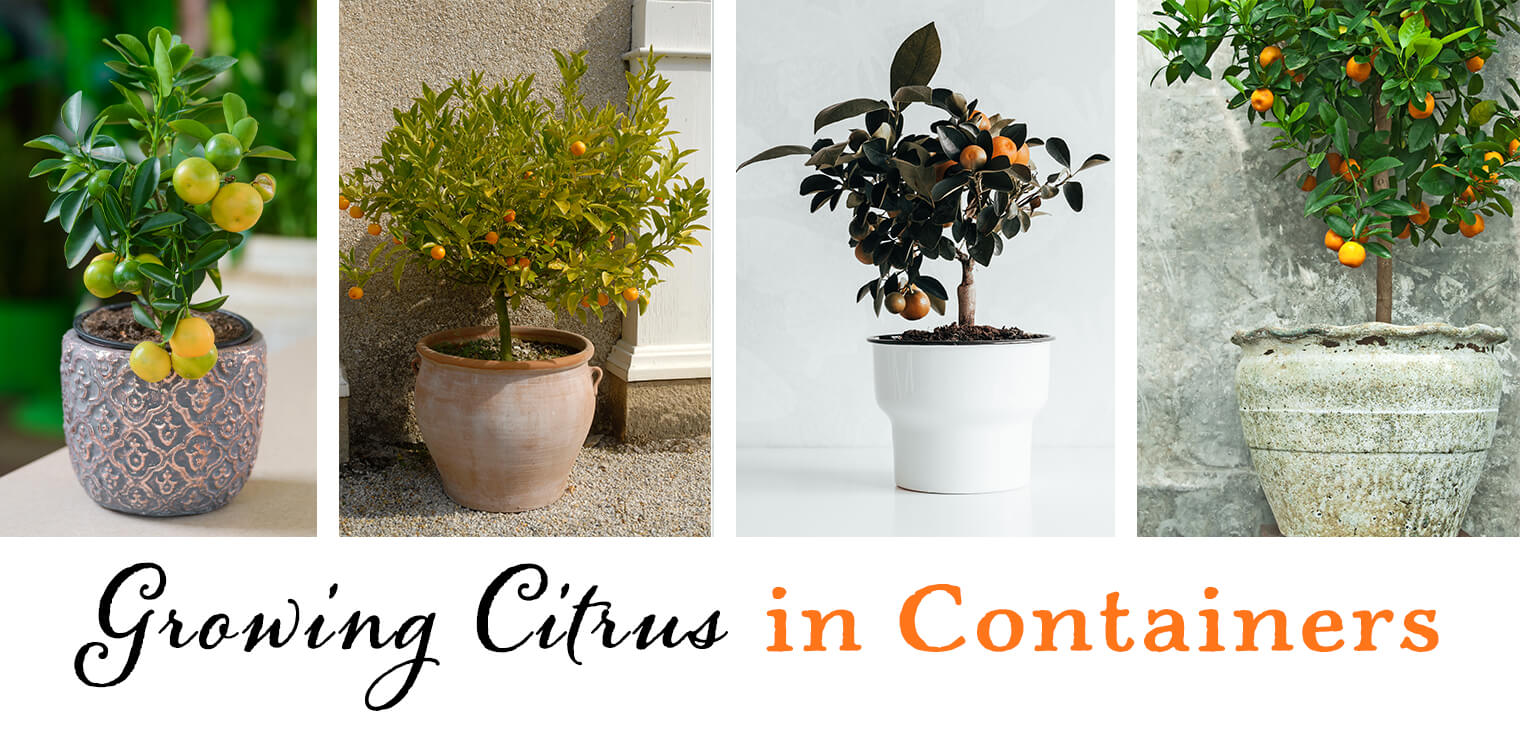
How To Grow A Citrus Tree In A Small Container
In Arizona, the citrus tree doesn’t just grow juicy, nutritious treats; it’s part of our history. These fruits are so iconic to the region they’re the first of our state’s five Cs: Citrus, Cotton, Climate, Cattle and Copper. With how well they grow in the warm sun, it’s no wonder so many local gardens feature these types of plants!
Is a citrus tree in your future? You may want to consider growing one in a small container or pot!
Why Citrus Trees are Perfect for Container Gardening
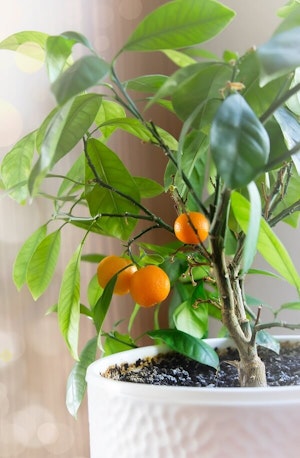
Citrus trees are a fantastic option for container gardening for a few reasons. Their flowers’ pleasant aromas are a welcome addition to porches or patios, the lush foliage is a beautiful addition to limited space indoors or outdoors, and there are plenty of smaller varieties that grow well in small containers and pots. We specifically recommend these nine, or other dwarf or semi-dwarf varieties:
- Australian Finger Lime
- Buddha's Hand Lemon
- Kieffer/Kaffir (Thai) Lime
- Kumquat Fukushu
- Limequat
- Mandarinqua
- Mexican Key Lime
- Owari Satsuma Mandarin
- Variegated Calamondin Orange
How to Plant Your Citrus Tree in a Container
Follow these steps when planting a citrus tree in a container. Also, remember that it will take a few years before it begins producing fruit, so don’t be discouraged if you don’t see the fruits of your hard gardening work right away!
Find the Right Container
Selecting your citrus tree is just the first step. Finding the right container is just as important.
Look for plastic, terra cotta or wooden containers—or even repurposed planters—with drainage holes so water doesn’t rot the tree’s roots. Also, be prepared to change containers a couple of times as your plant grows. As HGTV explains, “Start with a small container when planting a young citrus tree since it will be easier to maintain proper soil moisture than in a big container. If the soil stays too wet in a large container, the young tree with a small root system may rot and die.”
- Move your citrus tree from its 10-inch pot to a 16-to 18-inch pot for the first 3-4 years.
- Plan on upgrading to a 20- to 24-inch pot after that; it should give your tree another 5-10 years of thriving in your garden.

Plant Your Citrus Tree in Your Container
As you move your citrus tree into its pot, pay attention to its roots and be gentle as you pack the soil around them. Make sure your tree is well-placed in the container too, and prune it a bit after transplanting. Gardeners.com explains:
Locate the graft union. This is a slight bump or scar where the fruit variety was grafted to the rootstock, about 4" to 8" above the root ball. When transplanting, be sure the graft union remains above the soil line. Remove any young green shoots that arise from below this spot as soon as they appear. These suckers from the rootstock will expend the tree's resources without producing the fruit you expect from the variety.
To learn more, watch our "How to Plant a Tree” video.
Use the Right Gardening Soil
Because citrus trees need soil that drains well, you want to choose something light. Look for gardening mixes with peat moss, perlite, vermiculite and composts. If the soil is too heavy, create more air spaces by adding elements like hardwood bark into the mix.
We recommend using E.B. Stone Organics Citrus & Palm soil for potting or planting.
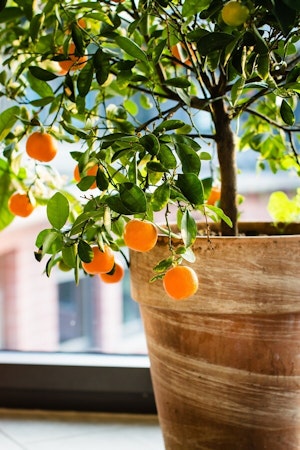
Find the Best Spot
Citrus trees love warmth and light; it’s one of the reasons they grow so well in an Arizona climate.
If the container will be outside — which we highly recommend, find a spot that gets plenty of sun, but is still protected during the hottest part of the day. As Savvy Gardening explains, “Position the pot so that it receives morning sun until about one in the afternoon. You’ll want the plant to be in the shade during the hottest part of the afternoon to avoid leaf scald and heat stress.”
If you’re not able to find a good spot in your yard to protect your young citrus tree from the sun, consider adding a shade cloth. Another popular option? White paint! Arizona Orange Company explains that Arizonans swear by it, claiming, “It keeps the trunk cool when the sun hits it. It also helps deflect the sunlight away from the large branches and lower leaves, or they will literally get sunburned.”
If you’re growing your tree inside, think about how bright the room is and how much sunlight it’ll see throughout the day. Adequate sunlight is key to growing citrus successfully!
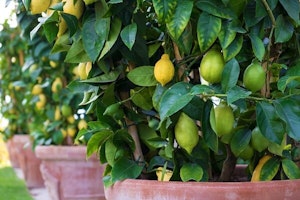
Give Your Citrus Tree Time Between Watering
Although your citrus tree needs plenty of water, it will prefer a deep drink every few weeks rather than more regular, shallower watering. In Arizona specifically, thoroughly soak the soil until the water starts coming out the bottom drain hole. In the hottest time of the year you may need to water every one to three days, whereas during the cooler season it could be every seven to ten days. It all depends on the temperature, length of the day, wind, clouds, size of plant, maturity of plant, location of the container, etc.
How can you tell if your citrus tree is ready for more water? HGTV explains, “Water when the soil is dry to 6 inches deep. If the leaves are wilting and perk up after watering, then you waited too long to water. If the leaves are yellowing and cup-shaped, and don't perk up after watering, then you have been overwatering."
Why is it so important to give potted plants a deep watering? There are a lot of misconceptions when it comes to container gardening and water. Here are two common ones:
- Myth: Plants can absorb the water from the top of the pot.
- Truth: The reality is that the roots, located towards the bottom of the container, are where the water is absorbed. A deeper watering will ensure it reaches them.
- Myth: Giving your indoor plants too much water will drown them.
- Truth: Your plants, specifically citrus trees, need enough water to thrive. However, you’re much more likely drown your plant if you water too often and don’t let the soil dry out between watering.
Remember, good drainage is key to any plant’s success, whether indoors or out.
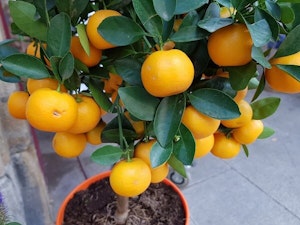
Fertilize Your Citrus Tree Three Times a Year
We recommend fertilizing your citrus tree in February, May and September. Here are our expert’s favorite products:
- Citrus & Fruit Tree Food by E.B. Stone Organics: This fertilizer helps stimulate new growth and ample fruit growth. It’s ideal for citrus trees, orchard trees, fruit vines and more.
- Fertilome Fruit, Citrus and Pecan Tree Food: This fertilizer is ideal for all varieties of citrus trees in addition to nut and fruit trees. It helps stimulate vigorous growth and a bountiful harvest.
- Grow More Citrus Grower Blend: This fertilizer is organically based, with ingredients (such as potassium) designed to produce sweeter, firmer fruit.
Prune Your Citrus Tree
In general, citrus trees don’t need a lot of pruning, but watch for and prune any new shoots that grow beneath the graft union. As the Phoenix New Times reports, the best time of year to prune is early spring, “When there's no chance of freezing, but don't wait until it's very warm and new growth starts…avoid cutting off excess amounts of new growth and buds and leave some ‘skirt’ branches to help shade the trunk.”
To learn more about pruning, what our "How to Prune” video.
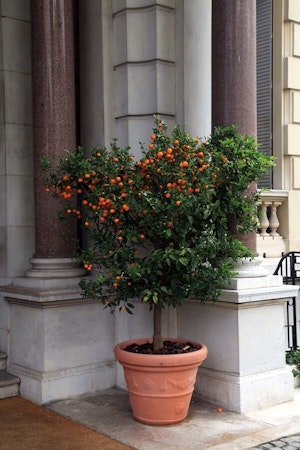
Protect Your Citrus Tree for Winter
As the weather cools off in the winter, protect your citrus tree with a frost cloth or move it up against a warm wall to make sure it doesn’t freeze on a cold night. The University of Arizona’s College of Agriculture and Life Sciences recommends moving your citrus tree inside once the nighttime temperatures regularly reach 40 degrees or less.
If your citrus tree is small enough, help it acclimate to the change. The National Gardening Association recommends, “When moving your plants outdoors in spring or back indoors in fall, make the transition gradual, in at night, out during day, and lasting about a month.”
Watch for Pests
Before you move your citrus tree indoors for the winter, you’ll want to make sure it’s free from pests as you won’t want them inside your home. The National Gardening Association suggests using warm, slightly soapy water to wash them off.
What about while your citrus tree is outside? Here are common pests Garden Guides recommends you watch for.
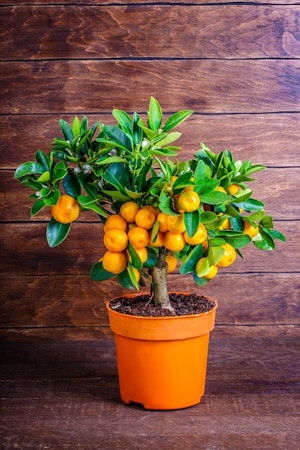
- Orange Dog Caterpillar: The larvae of the giant swallowtail butterfly, these pests can cause damage to younger trees that are less resilient. They’re light brown to dark gray, produce an odor that smells like lemons and can be controlled by removing them from your citrus tree by hand.
- Aphids: These small insects can transmit diseases that are fatal to citrus trees. The best way to control them is naturally, through ladybugs, lacewings or parasitic wasps.
- Scale Insects: Often found in the Phoenix area, these pests appear as small reddish brown spots, most easily spotted on the citrus tree’s fruit. Insects like ladybugs can help control them, but if you spot them on your plant it’s best to remove the entire branch completely.
- Citrus Peelminer: The larva of a small gray moth, these pests are most common in Central Arizona. They burrow beneath the citrus’ skin and create tiny tunnels throughout the fruit. They particularly enjoy grapefruit and navel oranges.
- Wooly Whiteflies: These small flying insects damage citrus trees by feeding on their sap. Symptoms of this pest are wilted leaves dropping from the tree.
- Thrips: One of the most significant citrus tree pests in the state, these small insects are less than 1/16 of an inch long and have narrow wings trimmed with tiny hairs. There are two common types of thrips:
- Flowers thrips feed on citrus blossoms.
- Citrus thrips feed on new leaves and small fruit early in the gardening season.
- Citrus Mites: These small arachnids are so small they’re hard to see with the naked eye. As Garden Guides explains, “Mites often occur during times of water stress when dusty conditions prevail. They attack the leaves of citrus trees, producing tiny yellow spots on the leaves. Some species produce a fine webbing between fruits or on the undersides of leaves. Proper irrigation can help control these tiny pests.”
Find the Perfect Citrus Tree & Container Today!
Are you ready to find the perfect citrus tree and pot for your home? Come visit one of our locations today! Our Trusted Garden Advisors are happy to help you select a variety to add to your yard, porch, patio or living room.


